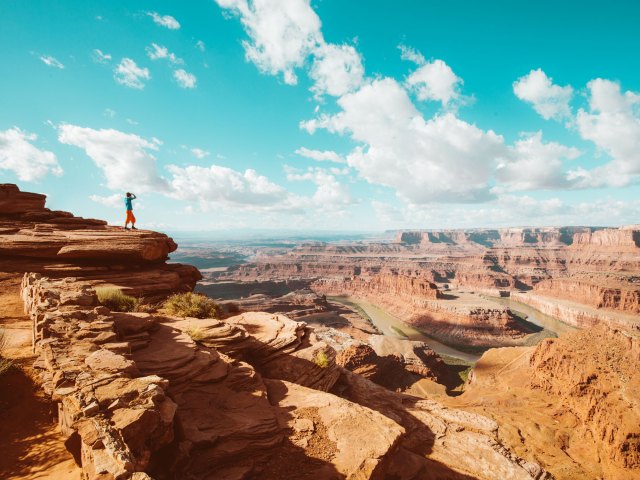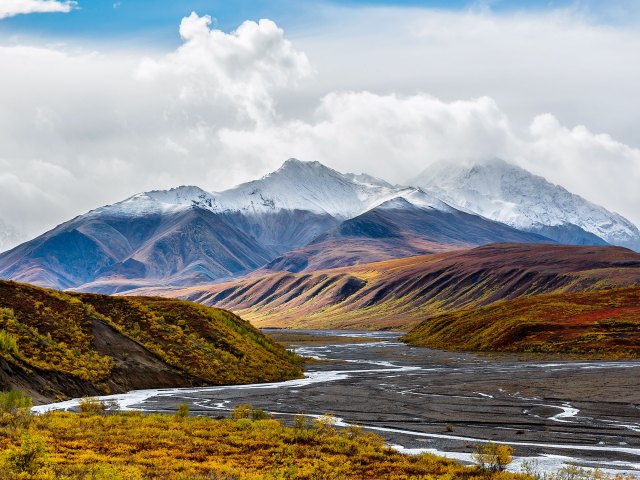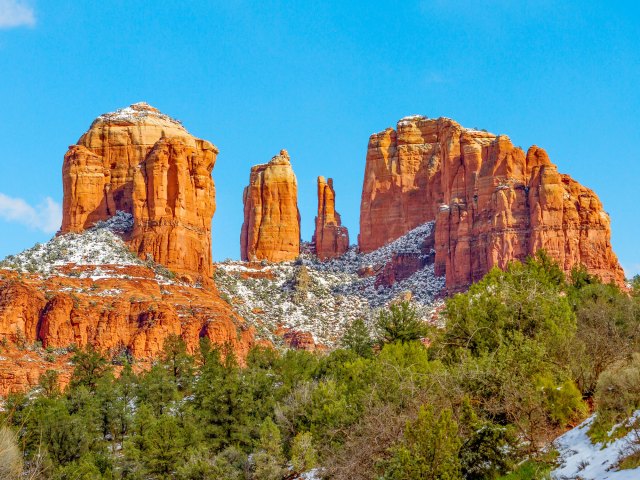America’s big cities tend to draw the attention of travelers, but often overlooked are the many dark and isolated corners of the country that provide ideal conditions for one of nature’s most pleasurable pursuits: stargazing. In particular, many national parks — famous for their breathtaking landscapes and incredible wildlife — lay claim as the darkest places in the country, making them the ideal environment for stargazing. Looking to feel humbled by the vast size and beauty of the universe? Here are six great stargazing spots to visit in the U.S..
Big Bend National Park – Texas

Big Bend National Park — covering over 800,000 acres in West Texas — has the lowest level of light pollution of any national park in the lower 48 states. The park forms part of the 9-million-acre Greater Big Bend International Dark Sky Reserve — the largest such protected area for stargazing in the world. Contributing to the optimal stargazing in this wild and isolated corner of the country is the lack of human population, ruling out the chance of seeing a glowing light from a house or nearby town. With just a pair of binoculars (or even the naked eye), visitors can spot meteor showers, constellations, and much of the Milky Way Galaxy. October to April is the park’s dry season and the most popular time to visit the park.
Canyonlands National Park – Utah

Canyonlands National Park is another certified International Dark Sky Park, which means it has “an exceptional quality of starry nights and a nocturnal environment that is specifically protected for its scientific, natural, educational, cultural heritage, and/or public enjoyment,” according to the organization that set out “to preserve and protect the nighttime environment and our heritage of dark skies.” Located in southeastern Utah, Canyonlands is famous for its dramatic rock formations. It also joins the ranks with Big Bend National Park with one of the darkest skies in the contiguous U.S. — on the darkest, clearest nights, roughly 15,000 stars can be seen from the park (compared to 500 by the average city-dweller). On a moonless night, binoculars can even be enough to see the rings of Saturn.
Death Valley National Park – California

Spanning 3.4 million acres, Death Valley National Park is the largest national park in the lower 48. With all that wide open and undeveloped land (which means no light pollution in sight), the area is prime for stargazing. Skies above the park are so dark that Death Valley was designated a “Gold Tier” Dark Sky Park, the organization’s highest rating in darkness, allowing stargazers to see astronomical objects that can be seen from few other locations on the planet. Death Valley’s arid desert climate also leads to a high number of clear nights with a pleasantly cool temperature. There are many places throughout the park that are dark enough to sit back and enjoy the show, but Mesquite Flat Sand Dune, Harmony Borax Works, Badwater Basin, and Ubehebe Crater are a few of the more popular spots.
Hawaiʻi Volcanoes National Park – Hawaii

Hawaiʻi Volcanoes National Park is home to two of the world’s most active volcanoes, Kilauea and Mauna Loa. This UNESCO World Heritage Site and International Biosphere Reserve protects one of the world’s most unique geological landscapes, which also happens to be spectacularly free of light pollution. The park is open 24 hours a day, seven days a week, and there are plenty of places to post up in the park to gaze up at the sky — the Kulanaokuaiki Campground and Kipukapuaulu parking area offer spectacular viewing platforms on clear nights.
Denali National Park – Alaska

In Alaska, fall, winter, and early spring experience long hours of darkness. Coupled with the fact that the surrounding area has very little light pollution, it’s the perfect recipe for incredible stargazing. Indeed, it doesn’t take much effort to see the stars in Denali — one of the most common and accessible routes is along the first 15 miles of Denali Park Road. You can drive your own car and choose where you want to pull over to gaze up at the sky. Riley Creek Campground is open year-round and is also a great place to spend the night enjoying the stunning night skies of Alaska. Lucky visitors to the park will also sometimes catch a glimpse of the northern lights.
Sedona – Arizona

The best part about visiting this charming northern Arizona town — about halfway between Phoenix and the Grand Canyon — is that you don’t have to completely abandon civilization and electricity to get a good look at starry night skies. In 2014, Sedona was designated an International Dark Sky Community, thanks to a city ordinance that helped reduce light pollution. Dozens of trails crisscross the iconic red rock landscape surrounding Seoda, creating a truly magical environment for stargazing. Once you’ve had your fill of twinkly stars, discover Sedona’s stunning natural parks, spiritual wellness scene, and vibrant culture.
More from our network
Daily Passport is part of Optimism, which publishes content that uplifts, informs, and inspires.























